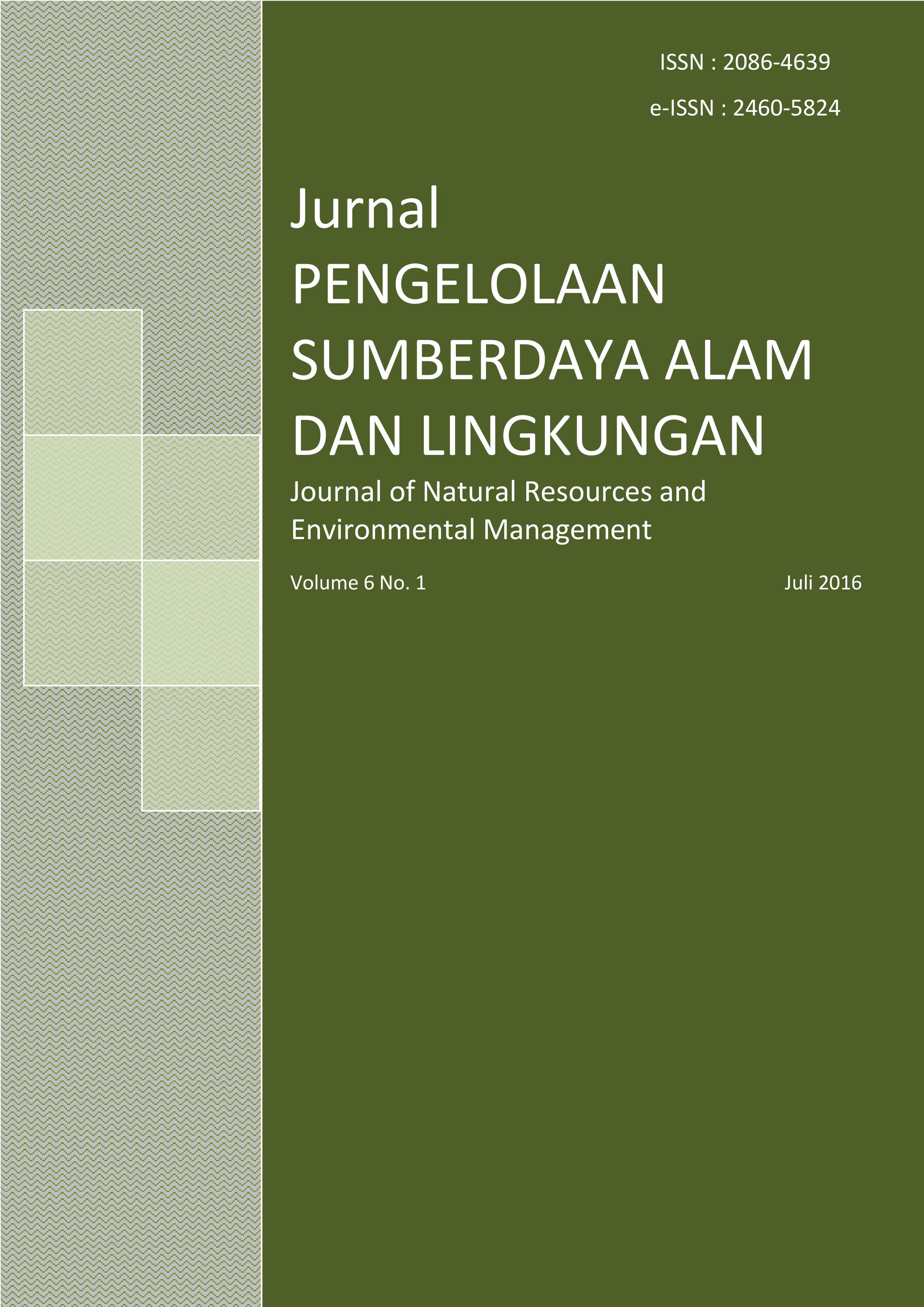Abstract
References
[ARC] Aprovecho Research Center, Shell Foun-dation United States Environmental Protection Agency. 2012. Test Results of Cook Stove Per-formance. Partnership for Clean Indoor Air
Al Gore. 2009. Our Choice, A Plan to Solve the Climate Crisis. Melcher Media, New York.
Alatas, I. H., H. Darmasetiawan, A. Yani, Musi-ran. 2008. Development of Cooking Stove from Waste (Rice Husk). Institut Pertanian Bogor, De-partment of Physics, FMIPA IPB, Kampus IPB Dramaga.
Barnes, D., K. Openshaw, K. Smith, R. Van der Plas, 1994. What makes people cook with im-proved biomass stoves? a comparative interna-tional review of stove programs. World Bank Technical Paper pp. 242.
Febriansyah, H., A. A. Setiawan, K. Suryoprato-mo, A. Setiawan, 2014. Gama stove: biomass stove for palm kernel shells in indonesia. confe-rence and exhibition indonesia renewable energy & energy conservation Energy Procedia, Pub-lished by Elsevier. [terhubung berkala] http://www.sciencedirect.com. [2013]
Iliffe, R., 2009. Is the biochar produced by an anila stove likely to be abenefial soil additive?. Advaned Enviromental and Energy Studies, Centre for Alternative Technology. [terhubung berkala]. http:// www.biochar.org.uk.
Jeffery, S., F. G. A. Verheijen, M. van der Velde, A. C. Bastos, 2011. A quantitative review of the effects of biochar application to soils on crop productivity using meta-analysis. Agric Ecosyst Environ. 144, pp. 175–187.
Karamarkovic, R., V. Karamarkovic, 2010. Ener-gy and exergy analysis of biomass gasification at different temperatures. Journal Energy 35, pp. 537–549.
Kauffman, N., J. Dumortier, D. J. Hayes, R. C. Brown, D. A. Laird, 2012. Producing energy while sequestering carbon? The relationship between biochar and agricultural productivity. Biomassa and Bioenergy 63, pp. 167 – 176. doi: 1016/j.biombioe.2014.01.049.
Lehmann, J., J. Gaunt, M. Rondon, 2006. Biochar sequestration in terrestrial ecosystems. Mitigation and Adaptation Strategies for Global Change 11, pp. 403–427. doi: 10.1007/s11027-0059006-5.
Lehmann, J., 2007. Bio-energy in the black. Fron-tiers in Ecology and the Environment 5, pp. 381-387.
Lehmann, J., S. Joseph, 2009. Biochar For Envi-ronmental Management: An Introduction. Earth-scan, UK and USA.
Mc Elligott, K., D. Page Dumroese, C. Mark, 2011. Bioenergy Production Systems And Bio-char Application In Forests: Potential For Renew-able Energy, Soil Enhancement, And Carbon Se-questration. Fort Collins CO, US. pp. 14
Miles, T., 2009. Use of biochar (charcoal) to rep-lenish soil carbon pools, restore soil fertility and sequester CO2. The United Nations Convention to Combat Desertification 4th Session of the Ad Hoc Working Group on Long-term Cooperative Action under the Convention, Poznan 1-10 December 2008.
Neubauer, Y., 2011. Strategies for tar reduction in fuel-gases and synthesis-gases from biomass gasi-fication. Journal of Sustainable Energy & Envi-ronment Special Issue pp. 67-71.
Park, W. C., 2008. A Study of Pyrolysis of Char-ring Materials and Its Application to Fire Safety and Biomass Utilization. Disertasi. Mechanical Engineering, University of Michigan, Michigan.
Roberts, K. G., B. Gloy, S. Joseph, N. R. Scott, J. Lehmann, 2009. Life Cycle Assessment of Bio-char Systems: Estimating the Energetic, Econom-ic, and Climate Change Potential. Environmental Science & Technology 2 (44), pp 827–833. 10.1021/es902266r ©
Roth, C., 2011. Micro Gasification: Cooking with Gas from Biomass. GIZ HERA Poverty-oriented Basic Energy Service.
Steiner, C., W. G. Teixeira, J. Lehmann, T. Nehls, J. L. V. Macedo, W. E. H. Blum, W. Zech, 2007. Long term effects of manure, charcoal and mineral fertilization on crop production and fertility on a highly weathered Central Amazonian upland soil. Plant and Soil 291, pp. 275-290.
Steiner, C., T. Harttung, 2014. Biochar as a grow-ing media additive and peat substitute. Solid Earth 5, pp. 995–999. doi:10.5194/se-5-995-2014 ©.
Woolf, D., J. E. Amonette, F. A. Street-Perrott, J. Lehmann, S. Joseph, 2010. Sustainable biochar to mitigate global climate change. Nature Com-munications 56, doi:10.1038/ncomms1053.
Xie, T., B. Y. Sadasivam, K. R. Reddy, C. Wang, K. Spokas, 2015. Review of the effects of biochar amendment on soil properties and carbon seques-tration. American Society of Civil Engineers. DOI:10.1061/(ASCE) HZ.2153-5515.0000293. ©
Yuswansyah, E. Y. A. Haryanto, L. B. Tamrin, 2013. Potensi penerimaan masyarakat terhadap kompor biomassa UB-03. Jurnal Teknik Pertanian Lampung 1(2), pp. 77-84.
Zhang, J. W., N. Mohammed, P. Cote, S. Dalpe, G. Dufresne, 2013. Greenhouse trials on biochar as the growth media for cucumber, tomato and pepper hydroponic vegetable production. Final Report. Alberta Agriculture and Rural Develop-ment Greenhouse Branch/Crop Research and Ex-tension Division 301 Horticultural Station Road EastBrooks, [terhubung berkala] https://www.google.co.uk/#q=biochar+as+a+growing medium+zheng +et+. [2 November 2015]
[ARC] Aprovecho Research Center, Shell Zheng, W., B. K. Sharma, N. Rajagopalan, 2010. Using biochar as a soil amendment for sustainable agriculture. Illinois Sustainable Technology Center University of Illinois at Urbana Campaign.
Authors
Authors who publish with this journal agree to the following terms:
- Authors retain copyright and grant the journal right of first publication with the work simultaneously licensed under a Creative Commons Attribution License that allows others to share the work with an acknowledgement of the work's authorship and initial publication in this journal.
- Authors are able to enter into separate, additional contractual arrangements for the non-exclusive distribution of the journal's published version of the work (e.g., post it to an institutional repository or publish it in a book), with an acknowledgement of its initial publication in this journal.
- Authors are permitted and encouraged to post their work online (e.g., in institutional repositories or on their website) prior to and during the submission process, as it can lead to productive exchanges, as well as earlier and greater citation of published work (See The Effect of Open Access).






